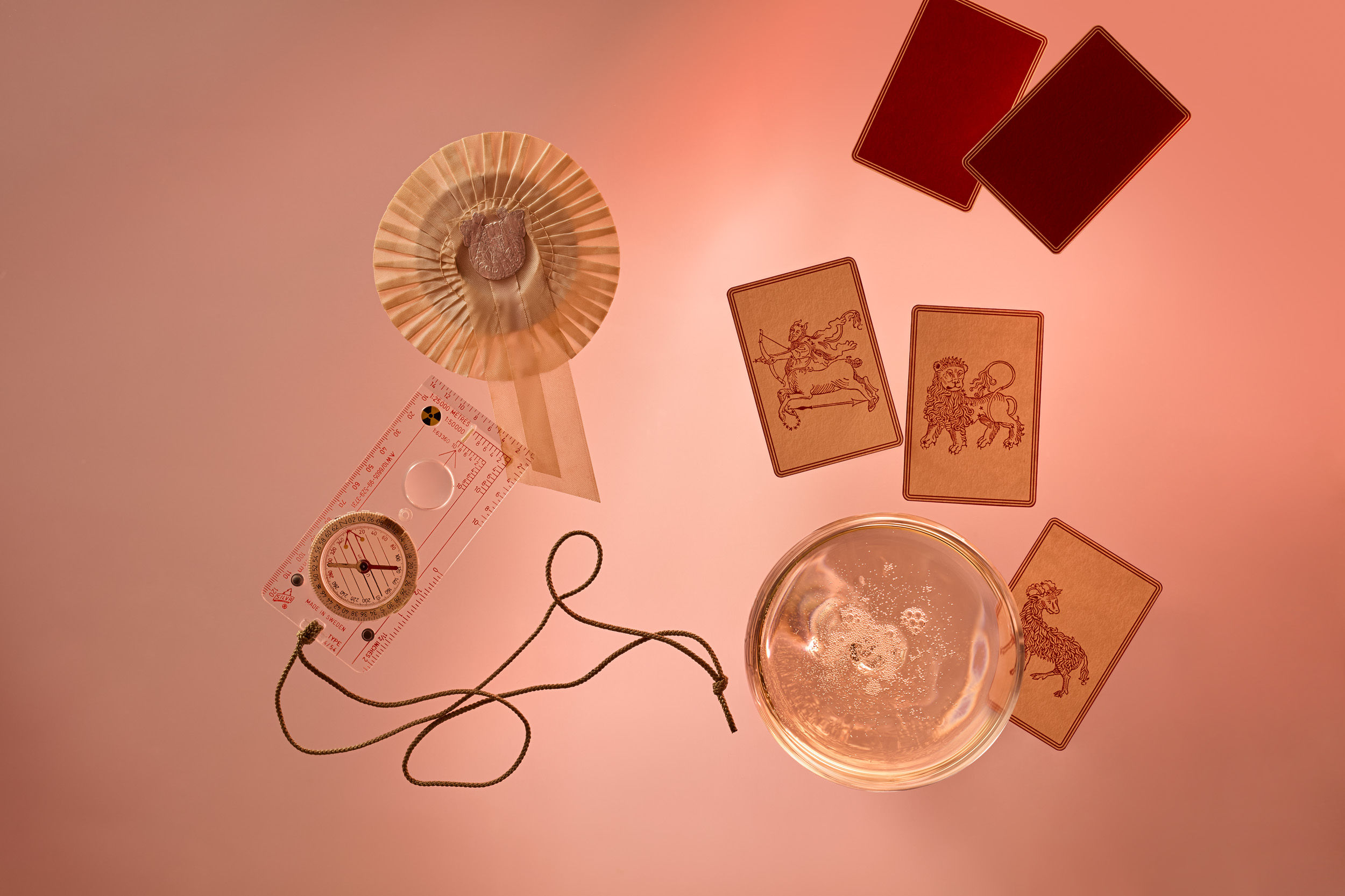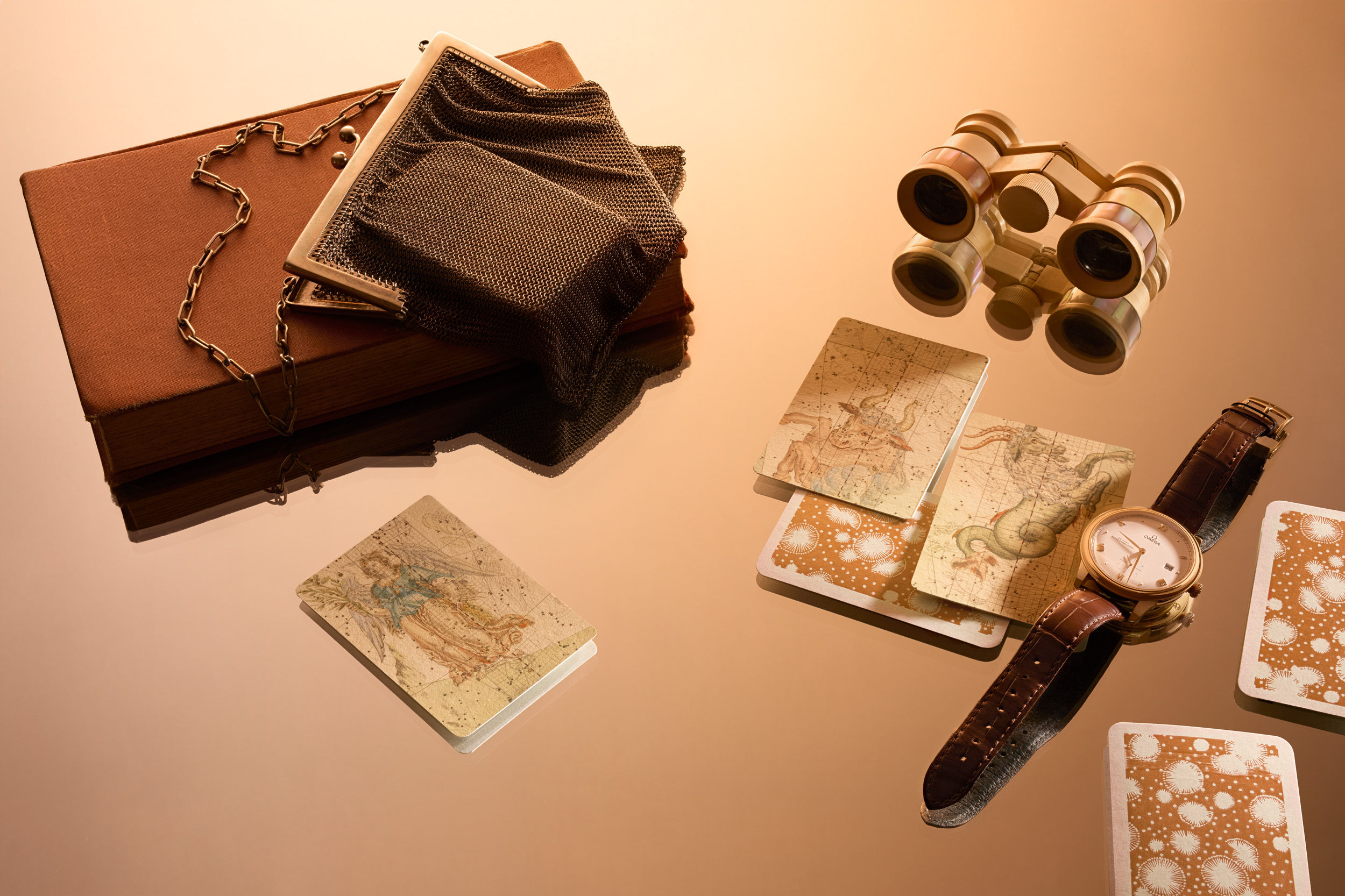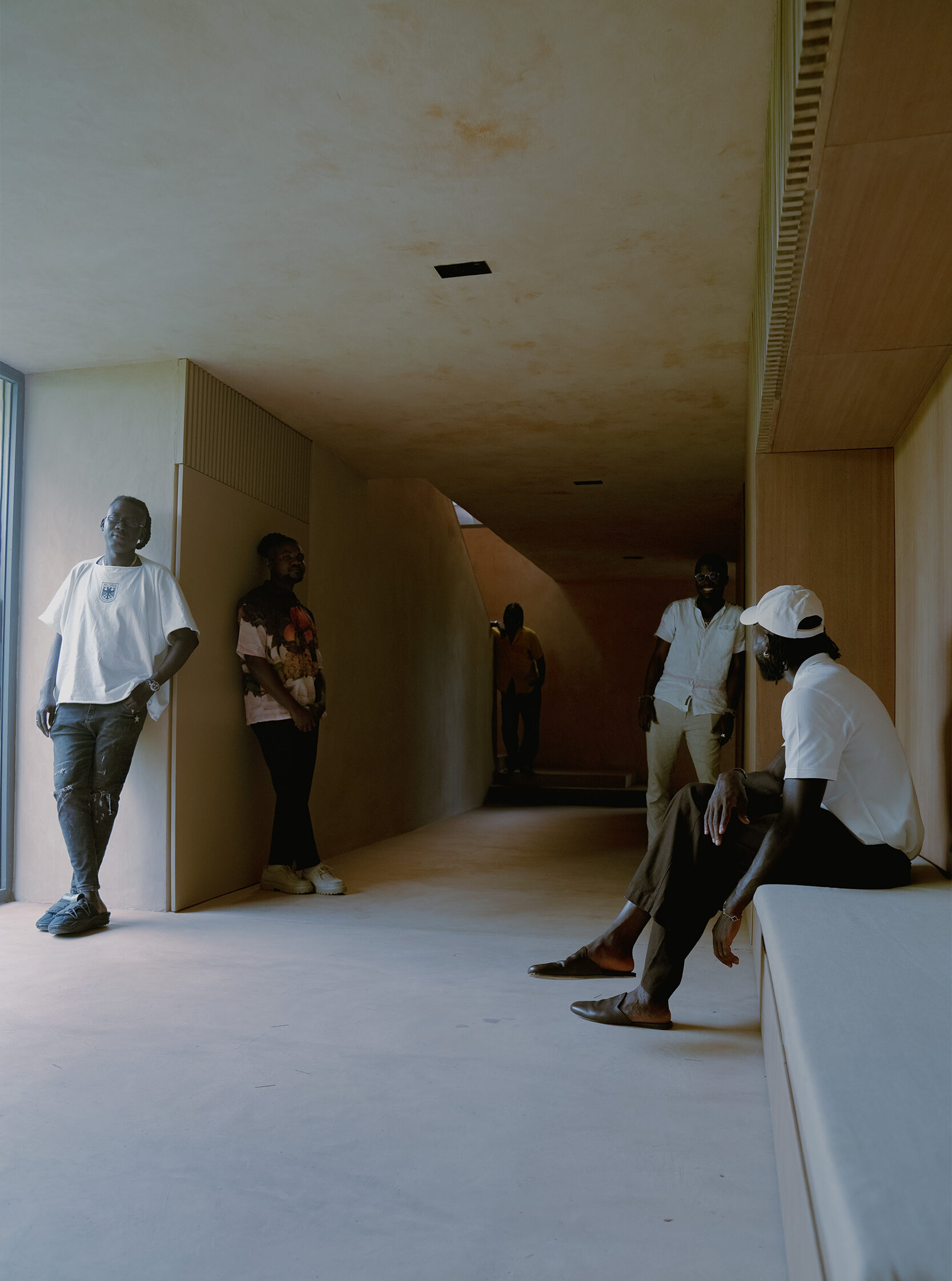
Making a splash—The water signs, represented by a key (CANCER; homebody), chess pieces (SCORPIO; tactical) and dice (PISCES; spontaneous).
- Photos Aaron Tilley
- Set Design Sandy Suffield
ZODIAC
Making a splash—The water signs, represented by a key (CANCER; homebody), chess pieces (SCORPIO; tactical) and dice (PISCES; spontaneous).
- Photos Aaron Tilley
- Set Design Sandy Suffield
- Words George Upton
- Photo Assistant Lucas Aliaga-Hurt

All aflame—The fire signs, represented by a rosette (ARIES; ambitious), a glass of champagne (LEO; decadent) and a compass (SAGITTARIUS; curious).

Down to earth—The earth signs, represented by a De Ville Prestige OMEGA watch (TAURUS; reliable), opera glasses (VIRGO; attention to detail) and an epic book (CAPRICORN; patient).
The concept of triplicity—where the 12 zodiac signs are organized into four groups based on the classical elements (earth, water, air, fire)—was popularized by the Roman poet and astrologer Marcus Manilius in the Astronomica (A.D. 30–40). The elements are considered an important “essential dignity”—which astrologers use both to understand the relative influence different planets will have on someone’s life and which signs will be more compatible with one another.
Though considered a pseudoscience since the 18th century, astrology—and in some forms, triplicity—has been part of cultures around the world for 3,500 years and its legacy is evident in everything from great works of literature and music to the actions of President Ronald Reagan. According to his chief of staff, Donald Regan, after the assassination attempt on Reagan, “virtually every major move and decision… was cleared in advance with a woman… who drew up horoscopes.”



